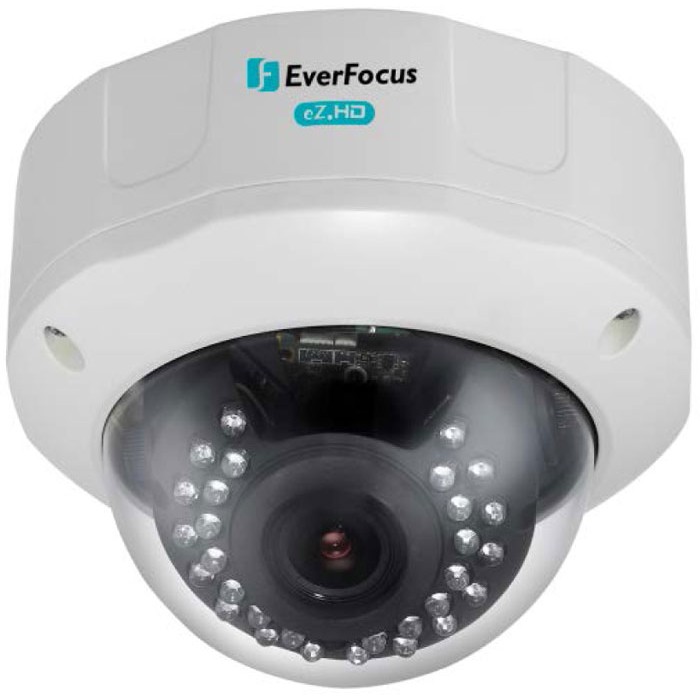We’ve long touted commercial surveillance cameras as one of the most effective types of commercial security available. Installing a camera system gives you the ability to review any footage of illegal or suspicious activity that takes place on your property. Furthermore, it also provides a deterrent to criminals considering targeting your property. After all, thieves seeing a visible surveillance presence often find another target. Unfortunately, many surveillance customers miss out on installing the most effective camera equipment possible for a variety of reasons. In this post, we share some valuable commercial camera installation tips to help you make the most of our your security investment.
First, we’ll explain the importance of choosing the camera best suited for your security needs. As with most security equipment, cameras do not fit under the “one size fits all” umbrella. Therefore, we’ll look at this topic from a variety of angles. At that point, we’ll discuss some of the ways we decide where to install cameras. This can effect a surveillance system’s performance as much as the type camera we install. Now, let’s dive in by looking at a couple factors we take into account when choosing cameras with our customers.
Choosing the Right Cameras for the Job
As we mentioned, cameras do not all fit the same “mold” when it comes to such factors as performance, function, and purpose. Making sure your choices fit your desired security outcomes goes a long way in securing your property. In this section, we’ll look at this topic from a couple different angles. First, we’ll give you an overview of camera types. From there, we’ll show you how becoming literate in examining camera features can help you install the proper cameras for your surroundings. Let’s get started with a look at the basics behind your camera options now!

Choosing the right cameras for your application goes a long way towards creating an effective surveillance system.
Sizing Up Your Basic Camera Options
Effective commercial camera installation requires choosing the best type of technology and type of camera you install. For example, you’ll need to decide to install either analog or Internet Protocal (or “IP”) cameras. Between the two, IP-based systems are considered the more modern and higher-performing option. As with many products, you typically get what you pay for when it comes to camera systems. IP cameras sometimes cost much more than their analog counterparts. The biggest question to you as a consumer is whether or not this change in quality is worth the jump in price. For more information on this specific choice, check out our post on Choosing IP vs Analog Cameras.
Additionally, some customers opt for wifi-connected cameras for their surveillance. Since these cameras use wifi and cloud-based storage options, they do not require us to run wiring from each camera location back to a centrally-located recorder. Unfortunately, these cameras do not perform as consistently as their non-wifi based counterparts. Moreover, clever thieves can even use wifi-jamming devices to render them useless during a break-in. This news clip from a Detroit-based ABC station explains how easy this can be for a criminal to do. However, these cameras can prove useful in performing less important security-related tasks, such as seeing if there’s a line growing outside of a building. They also allow for camera installation in areas not accessible to wires. Next up, we’ll see how you can take your surveillance cameras’ environment into account to help you choose the right equipment for your business.
Taking Your Camera Installation Environment Into Account
Once you choose the basic categories and types of cameras you wish to install, you still have a couple details to iron out when purchasing cameras. For example, a camera meant for indoor use will not last very long in difficult outdoor conditions. On the other hand, we also do not recommend installing a camera designed for outdoor use indoors. If you do so, you may end up paying for features that you do not use. Many properties, such as those near dams or in cold-weather climates, even provide more than the usual weather-related environmental issues.
One way to make sure you select the proper camera is by checking its “IP Rating.” The “IP” stands for “Ingress (or ‘Entrance’) Protection.” A camera’s IP rating is shown with the letters “IP” followed by two digits with varying values (e.g. “IP 67”). The higher the number of each digit, the more resistance provided by the camera. The first digit represents protection against solid objects, on a 0-6 scale. To achieve a “6” on this scale, an object must display resistance to dust. Most cameras are dust-tight, so almost every camera has an IP rating that starts with a “6.” The second digit generally ranges from a “5” to an “8.”
An IP65 camera can withstand jets or sprays of water, while an IP68 camera can withstand continuous water submersion under specific conditions. Obviously, IP66 and 67 cameras lie in between those two extremes. If you do have reason to believe your cameras face potential weather or element damage, we recommend cameras with an IP67 or IP68 rating. Doing so will ensure that your cameras can withstand the wear and tear of outdoor use for years to come. Next up, let’s review the importance of careful camera placement in effective commercial camera installation.

Vandal-Resistant cameras, such as this one by Everfocus, provide a strong measure of resistance against physical attacks.
Designing Your Surveillance Layout
When it comes to camera use tips, very few prove as useful as ensuring we install cameras at the most effective locations possible. We have to keep a few things in mind when determining camera locations. First, we must determine the most important areas of your property to watch. In general, doorways and parking lot entrances deserve camera coverage. Additionally, we also try to take into account specific areas of concern such as rooms with valuables, weapons, or any sensitive products or machinery worth keeping an eye on. Finally, point-of-purchase locations make great places to install surveillance as well. Cameras at registers can catch both criminal activity during an attempted burglary as well as employee theft.
From there, we also try to create some security for the cameras themselves. After all, burglars who notice cameras onsite may try to lower their risk of getting caught by destroying them. Installing cameras higher then first-floor level can make them tougher to reach. Additionally, installing vandal-proof cameras in high-traffic areas or areas where criminal activity is most likely to occir can make it harder to inflict damage on your surveillance equipment, as we mentioned earlier. Finally, we try to install your cameras in a manner in which your cameras “watch out for” each other. If all of your cameras have at least one camera watching them, criminals attempting to destroy any camera on your property will always get caught on video!
Creating an Effective Commercial Camera Installation
We hope this post helps you understand your commercial camera installation options. Moreover, we encourage you to contact us with any questions the material covered here may have raised for you. We will happily answer any and all of your security-related queries. Additionally, we also invite you to take advantage of our company’s free site survey offer. We provide complimentary, no-commitment security audits and equipment quotes. During our visit, we can address any security concerns you may have. Furthermore, we can make suggestions of our own based on the observations we make during our visit.
Perhaps you have a system of security cameras in place but want to utilize some of the information contained here to make it more effective. Or maybe you don’t have surveillance installed yet, and wish to get it started right from the ground up. Either way, we are here to help! We’ve worked with hundreds of customers to install surveillance that suits their security needs and goals. Together, we can create a complete security camera plan that keeps your property — as well as everyone on it — as safe and secure as possible!
